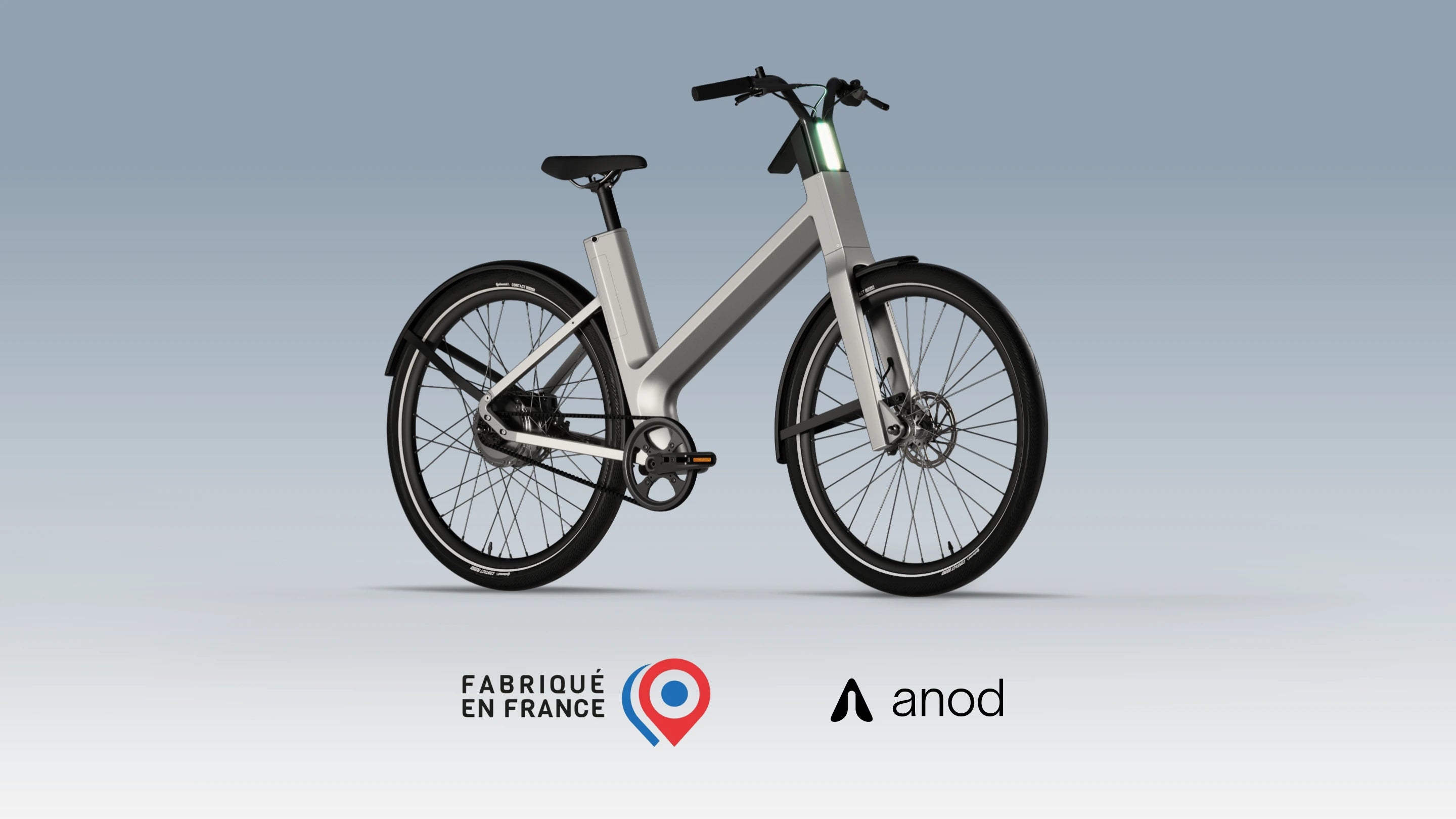How to choose and maintain your electric bike battery?

The battery is the “heart” of the electric bike. It not only determines the range of the bike, but also influences the overall quality of your experience with your e-bike, whether while riding, or after parking your bike, when you need to transport or recharge it.
In electrical technologies, the battery is often the component that suffers from wear most quickly. Understanding how it works and adopting good maintenance practices is therefore essential to optimize its lifespan. Here is everything you need to know about the best practices to adopt to ensure its longevity and repairability!
Understanding your electric bike battery

By understanding how your e-bike battery works, you can maximize its efficiency and durability.
The first thing to know is that electric bike batteries work on the principle of storing and releasing electrical energy to power the bike's motor. They are generally available in two main voltages on the market: 36V and 48V.
However, the battery voltage largely determines the power and range of the electric bike:
- 36V e-bike batteries are more common and offer good range for everyday use, making them ideally suited to urban commuting and short to medium distance travel;
- 48V e-bike batteries provide significantly more power, making them ideal for riders who cover longer distances or need extra assistance to tackle steeper terrain.
You should know that most electric bike batteries are removable , which makes them easier to recharge at home or at work . This feature also offers the possibility of securing the battery with an anti-theft device to prevent theft.
Regarding the Anod hybrid bike battery , here are its main advantages:
- ultra-compact 76Wh battery for 650 g, easy to slip into your pockets every day,
- for a range of up to 70 km,
- capable of recharging a smartphone,
- the lifespan is increased tenfold thanks to the supercapacitors of the hybrid system,
- Supercapacitors recharge with energy recovery when braking
- electric assistance that works even with an empty battery,
- all for a full charge in just 1h30 via USB-C (using the charger provided by Anod).
How long does an electric bike battery last?
The lifespan of an electric bike battery varies on average from 2 to 5 years . This estimate obviously depends on many factors, such as:
- the frequency of use of the bicycle: Particularly frequent use of the battery, over numerous charging cycles, contributes to its premature aging.
- Environmental conditions: strong temperature variations or humidity can accelerate battery wear, which results in shorter and shorter charging times.
- Internal chemical degradation: a battery undergoes natural chemical degradation over time. Each charging cycle causes chemical reactions that can cause the electrodes to deteriorate, gradually impairing the energy storage capacity.
Thus, battery wear depends greatly on the frequency and type of use, but good maintenance and following a few tips can greatly limit the wear of your battery.
Another tip is to use technologies that do not only rely on the battery as energy storage. In the case of a hybrid electric bike like the Anod Hybrid, the use of supercapacitors in addition to the lithium battery makes it possible to use it less, and therefore to increase its lifespan by several years.
Signs of an End of Life or Defective Battery
Successfully identifying the signs that your e-bike battery is nearing the end of its life or is defective is essential to avoid any unexpected breakdowns, but also to maintain an optimal riding experience.
Here are the main signals to know:
-
Significant reduction in range: If you notice that your electric bike travels less distance on a full battery charge than before;
-
Sudden drop in performance: Less effective pedal assist or intermittent power outages may signal battery failure;
-
Swelling or fluid leaks: Physical abnormalities such as swelling or fluid leaks from the battery cells are clear signs of failure;
-
Damaged connection terminals: Oxidized or damaged connection terminals can cause battery charging and operation problems;
- Charging problems: If the battery no longer charges properly or discharges quickly even when not in use, this may indicate a malfunction.
If you encounter one of these problems, we advise you to consider maintaining the battery, having it repaired or changing it.
Battery repair and maintenance

Now that you know the main signs of battery failure in your e-bike, here are some tips for ensuring regular battery repair and maintenance:
-
Regular cleaning and maintenance: When maintaining your electric bike , be sure to regularly clean the battery connection terminals as well as the charger contacts to prevent the build-up of dirt and oxidation. Use a soft, dry cloth to gently wipe surfaces, and avoid using harsh chemicals that could damage components;
-
Replacing defective terminals or connectors: If you notice that the battery connection terminals or connectors are damaged or oxidized, consider replacing them as soon as possible. Poor connection terminals can cause battery charging and operation problems;
-
Checking cables and connections: As opening a battery is a dangerous procedure, we advise you to leave the repair, if necessary, to a professional. Indeed, these contain sulfuric acid, exposure to which is extremely dangerous; This is why you should never open the battery.
-
Battery Calibration: Some e-bike batteries may require periodic calibration to maintain optimal performance. To do this, simply follow the manufacturer's instructions to correctly calibrate the battery according to its type and model;
- Advanced diagnosis: If you experience persistent problems with your e-bike battery despite repair attempts, do not hesitate to call a qualified professional for a thorough diagnosis!
At Anod, we attach great importance to the repairability of our hybrid bike! This is why all the components of the Anod bicycle are very easily repairable and replaceable, making your future bicycle repairable at any bicycle dealer near you.
Our advice for choosing the right battery for your electric bike
Here are our tips for choosing the right battery for your electric bike:
- Pay attention to battery capacity: Measured in amp-hours (Wh), battery capacity determines how much energy it can store. The higher the capacity, the greater the autonomy of your electric bike will be. To choose the right capacity, remember to take into account the distance you plan to travel on a single charge;
- Check the battery voltage: Battery voltage, measured in volts (V), directly affects the overall power and performance of your e-bike. We recommend that you choose a battery with a voltage compatible with your existing electrical system, the standard voltages on the market are generally 36V or 48V;
-
Choose a branded battery: Batteries from reputable manufacturers and high-end bicycle brands generally guarantee you a high level of production and quality control, as well as good after-sales service;
-
Price: price is an important criterion to take into account, especially if you have to change the battery due to theft for example. Batteries can cost up to €700. This is an element that regularly changes in the life of an electric bike, so anticipate a potential future purchase;
- Cooldown time: Li-ion batteries generally recharge quickly, between 3 and 5 hours. Be sure to check the charging time so you aren't caught off guard, especially if you use your e-bike frequently. Anod stands out on this point with its compact battery which recharges in 1h30;
-
The charger: For each manufacturer, each battery model has its own specific charging cable. The Anod battery, on the other hand, uses a USB-C cable to allow easy charging at any time.
-
Size & weight: You will need to regularly carry your bike's battery, whether to recharge it or to have it with you while parking. Clutter then becomes a major problem. It is therefore important to check the weight of the batteries. On the market, a battery weighs on average between 2 and 4 kg. To meet this need, Anod offers a lighter than average battery, weighing only 650g.
- Know where the battery is designed: In the battery market, the majority is produced in China. However, as European standards are more restrictive than Chinese standards, some batteries may not comply with regulations. This is why it is recommended to turn to well-established brands that are aware of the regulations. Opting for French manufacturers, as offered by certain brands such as Anod, can be a simpler and more reliable solution.
Beyond the technical aspects, buying products made in France allows you to avoid questionable production conditions, whether in terms of human rights or respect for the environment.
Battery life and how to optimize it
On average, an electric bike battery can provide a range of 30 to 80 kilometers on a single charge , depending on these characteristics. Battery capacity is often proportional to its weight, generally between 2 and 4 kg.
To remedy this lack of practicality, Anod has managed to reduce the weight of the battery while maintaining a large energy storage capacity. Anod therefore offers a 650g battery that can travel up to 70 km, thus avoiding dependence on high weight for sufficient autonomy.
To optimize the battery life of your electric bike , here are some best practices to adopt:
-
Do not let the battery discharge completely before recharging: partial charge cycles are less stressful on the battery and can help extend its life;
- Store the battery in a dry place and at room temperature: especially when not in use for long periods, as this will help prevent corrosion and degradation of the battery components. We recommend keeping your bike dry, between 10 and 20°C;
- Be sure to charge the battery with the charger provided by the electric bike manufacturer: using an incompatible charger can significantly damage the electric bike battery. Unless the battery is compatible with universal chargers (USB-C) like our Anod battery. In this case, no dependence on a specific charger.
The Anod product battery: robustness and versatility

The secret to the exceptional performance of the Anod hybrid bike? This versatile charging technology is 100% French !
The superior lifespan of the Anod battery is one of its main advantages. Thanks to its hybrid system incorporating supercapacitors , the battery is subjected to less stress than on a classic electric bike. This unique design significantly extends its lifespan, providing cyclists with long-term reliability and much-needed peace of mind.
Beyond its robustness, the Anod battery also stands out for its versatility . Weighing only 650g , it is extremely light and compact , thus facilitating its integration on the bike. Its ultra-fast charging in just 1.5 hours thanks to USB-C connectivity, with the possibility of recharging your smartphone if necessary, is another practical advantage for cyclists in a hurry in urban areas.
Finally, you should also know that the Anod battery uses six times less lithium than traditional batteries, which makes it more environmentally friendly while guaranteeing exceptional performance! His price ? €250, for 100% French manufacturing.






